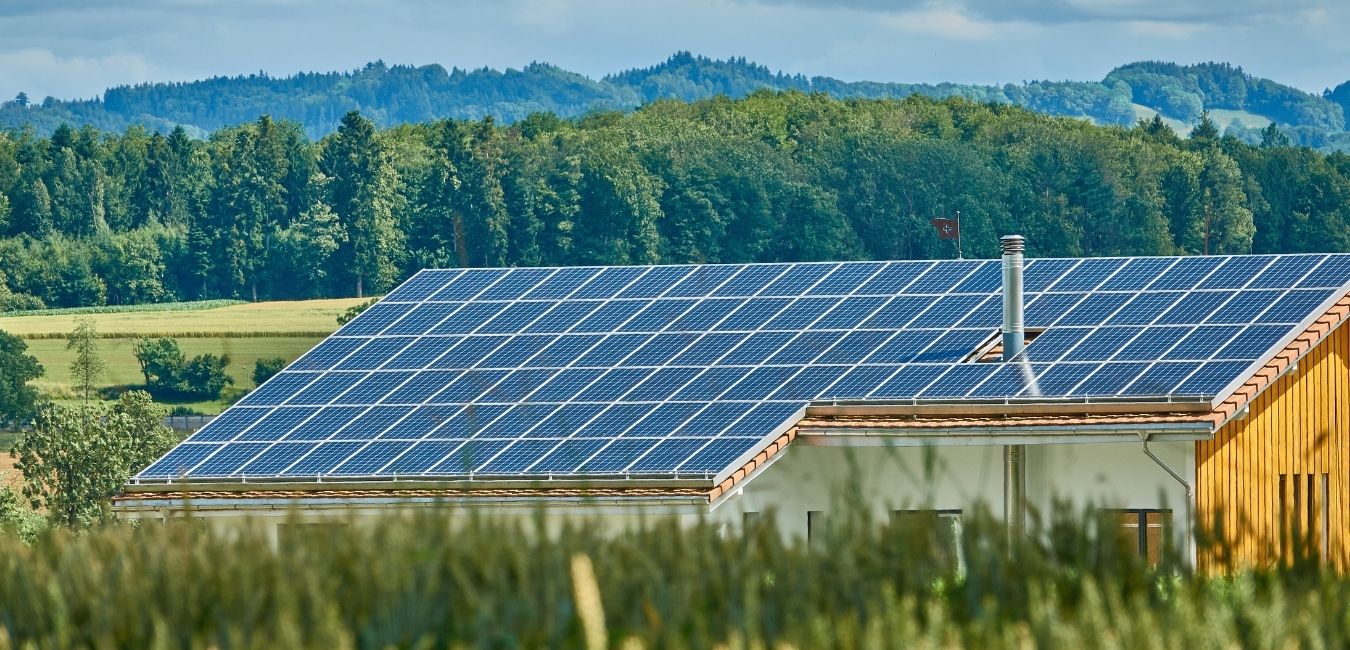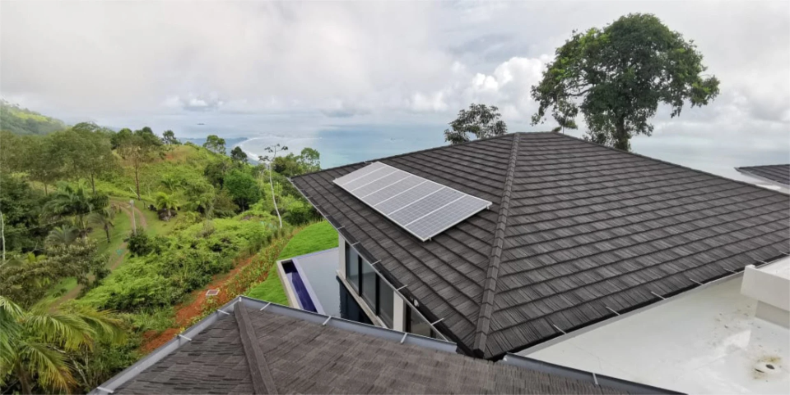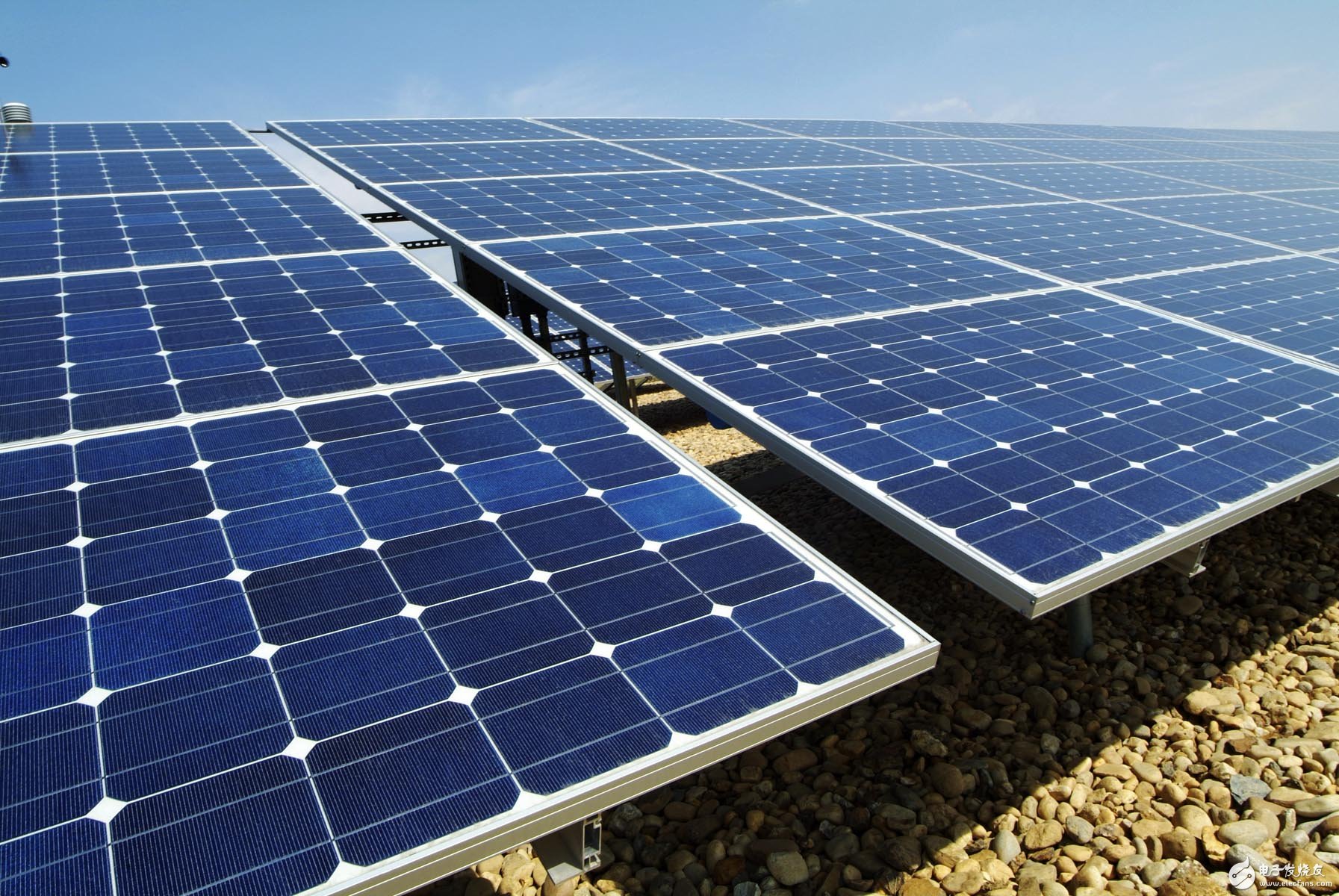Solar cells power up villages by turning sunlight into energy, eliminating dependence on expensive grids. For instance, a 300W panel can generate about 1.2 kWh/day, sufficient for lighting and fans. Their pay-as-you-go models ensure affordability even to millions in Sub-Saharan Africa and India at just $5/month.
What Are Solar Cells?
Photovoltaic, or solar cells, are semiconductor devices that directly convert sunlight into electrical energy through the photovoltaic effect. In this process, photons, otherwise known as light particles, hit a semiconductor material—such as silicon—and thereby knock electrons loose to create an electric flow. One unit or cell of a solar panel produces DC electricity with a voltage of about 0.5 to 0.6 volts at standard test conditions.
Generally speaking, solar panels are arrays of several solar cells connected in series or parallel to increase voltage and current. A normal solar panel is rated from 250 to 400 watts and can generate about 1.2-1.5 kWh/day, depending on sunlight exposure and the ambient environment where the panel operates. For instance, a 300-watt capacity panel can provide ample energy to power some essential devices such as LED lights, a small fan, and a mobile charger in a rural household where sunlight is plentiful in equatorial regions.
With the increase in the study of material science and the various ways of production, solar cells have improved in efficiencies. Currently, monocrystalline solar cells have an efficiency of up to 23%, while in advanced experimental technologies, perovskite solar cells can attain efficiencies much higher than 30%. Improvements within these two areas will continue making the solar technologies more available and efficient for rural communities.
Rural Benefit Areas
Affordable Electricity
The price of solar technologies has fallen enormously over the past decade. It is, in many cases, already a very cost-effective solution for rural electrification. In the period from 2010 to 2023 alone, the prices for PV modules decreased by over 90%. Under optimum conditions, the solar energy LCOE has already reached below $0.02/kWh. This is particularly true for rural areas, where grid extension might cost up to $15,000 per kilometer, while the use of solar power offers radically cheaper alternatives.
For example, M-KOPA installs solar kits at less than $1 per day with PAYG financing in Kenya. These would be typical packages containing a 20–50-watt panel, LED lights, a phone charger, and a small radio. This class of systems enables rural families to switch from expensive kerosene lamps to clean, affordable solar energy, saving up to 80% on energy costs.
Reliability and Energy Independence
The high cost of infrastructure and tough topography have resulted in the majority of rural communities without grid access or unstable. Systems such as standalone or microgrids ensure reliability in the delivery of energy. A typical example would be a 50 kW solar microgrid serving 150-200 households with basic needs of electricity, such as lighting, refrigeration, and charging phones.
From Uttar Pradesh to Bihar, upwards of 2,000 villages in India have solar microgrids. Because they are freestanding aside from the main grid, regional blackouts don't threaten energy security. In Nepal, tiny mountain communities which have never had electricity before are being served by solar mini-grids. They allow schools, health clinics, and small businesses to be powered for the very first time.
How Solar Power Works
Direct Current and Alternating Current
Solar panels generate their power in terms of direct current (DC), which flows in one direction. Modern appliances and grids run on alternating current (AC), which periodically reverses the direction of flow. Solar systems use an inverter to convert DC into AC.
1. Inverter EfficiencyEfficiency of Conversion: Modern solar inverters achieve conversion efficiencies of above 98%. So, a 5kW system would thereby be expected to have about 4.9kW of effective AC power with a good quality inverter. For a rural house, this would be enough to keep refrigerators running (200–300 watts), several TVs (50–100 watts), and shallow well pumps (500–800 watts).
2. Hybrid InvertersAdvanced hybrid inverters combine the functions of battery management with DC-to-AC conversion. These systems are particularly useful in rural areas when sunlight is intermittent, or energy demand varies considerably with time. For instance, in Zambia, a hybrid inverter installed at a rural health clinic provides power to medical devices and vaccine storage with no loss of power at any time of the day when the weather conditions become cloudy.
Energy Storage Systems
Batteries are crucial for storing excess energy generated by solar panels, which is then utilized at night or under cloudy conditions. Lithium-ion batteries have dominated the market because of their high energy density, long lifespan, and capability for deep discharge.
1. Capacity and ApplicationsThe energy stored in a conventional Li-ion battery of 10 kWh capacity can easily meet the energy needs of lights, fans, and appliances of a rural household for a whole day. For larger applications, village microgrids deploy batteries upwards of 100kWh capacity for smoothening mismatched energy supply and demand between the supply and demand.
2. Technological AdvantagesEmerging technologies, such as solid-state batteries, have even better energy densities and much improved safety. For example, Fraunhofer Institute research shows that solid-state batteries could increase lifespans in storage by 50%, thus being very suitable for rural electrification projects.
Affordable Energy Solutions
Decentralized Solar Infrastructure
Solar systems offer decentralized rural electrification by eliminating expensive transmission lines and centralized power plants. In Tanzania, modular solar microgrids of 5kW to 50kW capacity power villages completely at electricity costs of $0.12-$0.18 per kWh.
1. Flexibility and ScalabilityDecentralized solar is highly scalable: a small village can start with a 10kW microgrid and scale up to 50kW or more whenever energy demand increases. This model has been followed by solar cooperatives in Ethiopia, catering services for over 200,000 people in 500 villages.
2. Off-Grid InnovationsThese are innovations like portable solar kits and solar-integrated lanterns that have brought energy to some of the most remote areas. For instance, the distribution of solar lanterns by Barefoot College in India has provided light to more than 100,000 rural households and reduced kerosene consumption by as much as 80%.
Solar Water Pumps
Solar-powered water pumps have changed the face of agriculture in rural areas by giving them assured irrigation. A conventional 3HP solar pump can pump 40,000 liters of water per day, enough to irrigate 10 acres of farmland. More than 100,000 farmers in Rajasthan, India, have already adopted solar pumps to date, increasing crop yield by 30% and reducing irrigation cost by 70%.
Improving Daily Lives
Quality Education
Electrification through solar energy greatly influences education through proper lighting and powering digital tools. In Ghana, for instance, schools with installed solar systems recorded a 25% increase in attendance, while 15% of the students improved in their performances.
1. Nighttime StudiesLighting from solar sources enables children to study after dark, adding as much as 3-4 hours of study every day. As an example, in rural Uganda alone, 70 percent of the students have been able to regularly do their homework since the local NGOs distributed solar lamps.
2. Integration with TechnologyThis would include supplementary digital learning devices, including tablets and projectors, inside the solar schools. Solar-powered multimedia classrooms in Bangladesh have seen a rise in its literacy rate by 20%.
Supporting Economic Development
1. Small BusinessesAccess to solar energy allows small business enterprises to expand their operations. In Tanzania, for example, the use of solar-powered mills increases grain processing rates by 50%, while in Uganda, solar refrigerators save up to 40% in spoiled fish catches and increase local catchers' incomes.
2. Women's EmpowermentThis has greatly positively impacted the women-owned businesses. In Malawi, for instance, the use of solar sewing machines increased women's production by 150%, thereby enabling them to gain financial independence.
Mitigating Electricity Challenges
Energy Poverty
Energy poverty affects over 1 billion people globally, particularly in rural areas. Solar solutions alleviate this by providing reliable and affordable electricity. For example, the World Bank's Lighting Africa initiative has distributed solar kits to over 30 million people, reducing household energy costs by 50%.
Mitigating Climate Change
This replaces many of the kerosene lamps that cause carbon emissions. One 1kW solar system offsets nearly 1 ton of CO2 every year. If deployed at scale, by 2030 the solar system will avert 50 million tons of CO2 emissions annually, which is a quantity comparable to taking 10 million cars off the road.
Future of Rural Electricity
Solar technologies continue to evolve and promise further enhancements for rural electrification. Bifacial panels, which capture sunlight on both sides, improve energy yield in a range of 10-20%. Perovskite solar cells have theoretical efficiencies upwards of 30% and could dramatically cut the cost and space of installation.
Furthermore, international funding, alongside government initiatives, accelerates the growing rate of solar adoption. The International Solar Alliance has set a new target of inducting solar power into 1,000 rural communities by 2030, accessing energies to upwards of over 200 million people. These initiatives make solar energy one of the cornerstones of sustainable rural electrification.




